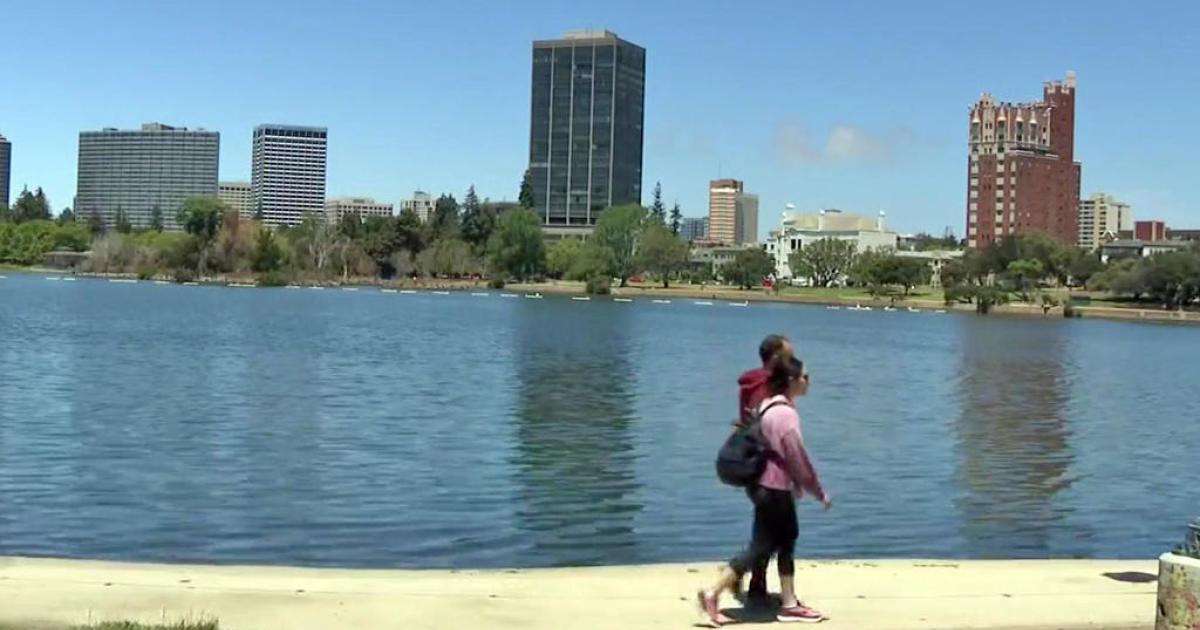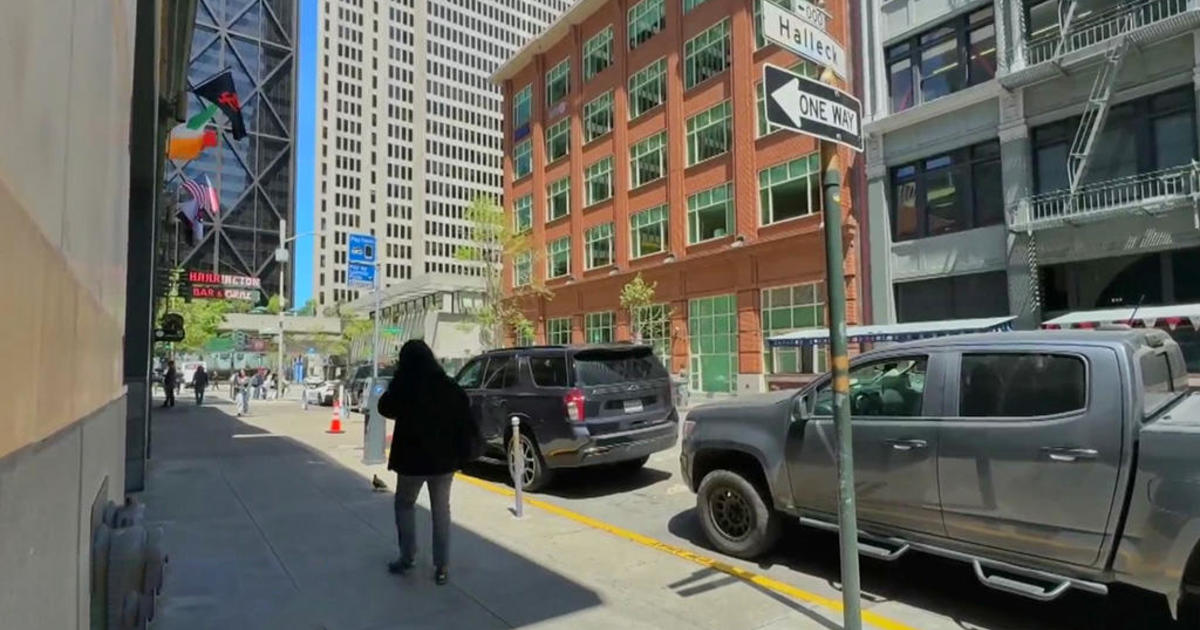New Technology Revs Up Pixar's 'Cars 2'
EMERYVILLE (CBS) - We all know what the reflections off cars or the roiling of the ocean are supposed to look like. So if you are tempted to believe that what you'll see in "Cars 2" proves that Pixar has made its first live-action film, think again.
This is the hit-making studio that breaks new technological ground with most of its new films, and "Cars 2," which opens tomorrow, is no exception. Where its technicians applied real physics to the escape of thousands of balloons in "Up," or true lighting effects to the rolling and pitching of plastic garbage bags in "Toy Story 3," Pixar has once again pushed its computing powers to the limit--and gone well beyond them.
READ MORE: Pixar's 'Cars 2' Goes Global
With "Cars 2," as the film's director and Disney chief creative officer John Lasseter pointed out at a recent event in San Francisco, the filmmakers invented several new ways to handle common effects, and though innovating for the sake of innovating isn't the studio's style, it seems to come with the territory of making a new Pixar film.
And creating new effects doesn't come cheap. According to Apurva Shah, the supervising technical director on "Cars 2," Pixar had to triple the size and scale of its legendary render farm in order to achieve the computing power its new effects required for the film. But don't expect the studio to rest on its computing laurels for its next movies. Given its penchant for upping the ante with each new project, it's a good bet that even more new Dell render blades will be making their way to Pixar's headquarters here soon.
Water effects
When the team members behind "Cars 2" began working on the film in 2006, they realized that because one of the biggest sequences in the film takes place on and around an ocean-based oil rig, they wanted to step up their approach to animating open water. Already, Pixar had taken the industry in new directions with its underwater effects for "Finding Nemo." But now, Shah said in an interview in his office, the team hoped to improve on the current industry best for an ocean's choppy surface.
With "Nemo," Shah explained, Pixar had come up with a "softer-looking water," but with "Cars 2," the team felt that audiences would be expecting the oil rig sequence to feature edgier, stormier water
To achieve that, they explored a series of new water systems and ended up applying a mathematical wave model called Tessendorf, Shah said, which allowed for the creation of "more cuspy," sharper sea waves.
This was also important, he said, because the sequence involves a large boat rolling in and out of the high waves, and that required having the seas appear rough as the boat slammed into the water, and the water slammed onto the boat. It was crucial, then, to find the way to show the boats--which are also characters in the film--moving through the water and undulating in it, kicking up surf and foam and a trailing wake, and having it look right. If the effects weren't extremely realistic, Pixar's thinking went, audiences wouldn't buy it.
And then there was one more challenge. With the oil rig scene taking place at night, there would be a lot of lights shining down on the water, and the team needed the illumination effects to look right as well. "Normally, water in films up to now has been treated like a surface," Shah said. "It may have some details, but it's mostly like a 2D surface. We wanted to treat water like volume. So when searchlights penetrate the water, [we gave] you this volumetric feeling."
Similarly, the team had to handle the shadows that would be cast deep into the water from tires floating on the surface.
All of this was more than just a technical achievement. Pixar is known for storytelling and creativity, and Shah said that for the artists on the film, having the technology to make sophisticated water effects served the most important master of all: the story. So in that sequence, the audience sees the search for one of the film's main characters, a car called Finn McMissile--voiced by Michael Caine--and the filmmakers knew that the emotion in the sequence would be aided by moviegoers' eyes not focusing on poor effects. And in this case, that meant inventing the techniques to solve the problem.
"We don't set out to do something new," Shah said. "We look at the [story] boards...and where we feel the existing technology isn't giving us what we need, we try to take it forward...It goes back to, what do we want to put on screen, and what are the tools that are missing."
Reflections
In a film where cars are the main characters and glitz and glamor is provided by the story line and the environment--scenes were set in and around Italian coastal towns and amid the bright lights of Tokyo--it wouldn't do to cut corners for effects that wouldn't make the cars feel real, even if they do talk.
For one, Shah said, designing the shading and reflections for the cars was a factor of the idea that while humans have skin, cars have "these beautiful clear-coat paint jobs with reflections that bring out their lines."
In the original "Cars," Pixar used the latest technology for the shading and reflections, but with "Cars 2," the artists had new tools at their disposal. One of the main steps forward was being able to design the "paint" to appear to have "suspended metal flakes that give you sheen and sparkle," Shah explained. In the first "Cars," such flakes wouldn't have worked, he said, as they'd have gotten lost.
But too, the technology used for the reflections was upgraded for the new movie, giving the cars "really beautiful broad sheens we weren't able to get before," Shah said. And that was important since Finn McMissile and other cars in the movie have very high-end paint jobs that needed to explode on the screen.
"We came up with a different mathematical representation for them that does a much better job even when it becomes finer," Shah said.
Gatling gun physics
The average person may not know what the physics are for bullets fired from a Gatling gun, but they would likely be able to feel it if such a sequence wasn't done properly.
Shah explained that another part of "Cars 2" featured just such a scene--a cacophony of bullets, tracers, smoke, bullets colliding with objects, and more. And in order to get it to look right on screen, Shah and his team turned once again to physics.
Recalling the work Pixar did with balloons on "Up," Shah said the scene ended up requiring some video game references. The approach, he explained, came from the idea of a real-time shooting game, in which a player pulls out a gun and shoots in whatever direction they choose. That requires a good physics engine to determine what happens. "So we created our own little [virtual] world so we could do that," he said.
To be sure, the filmmakers were able to go into the sequence and "finesse" certain elements, but in general, Shah said, the results showcase what Pixar was able to create by letting physics loose on the bullets and what they hit. It was, he said, the collision of multiple simulations at once: Rigid body dynamics involving the bullets flying from the gun; volumetrics with the gun's smoke; and more. The actual bullet holes in the wall was a "cheat," he said, involving adding a second surface to the wall. But the scene features the bullets going just where the physics engine said they should, apart from any specific human direction.
Render farm
One of the keys to Pixar's ability to do what it does is the giant, powerful render farm located in its main headquarters building here. This is serious computing power, and on "Cars 2," it required an average of 11.5 hours to render each frame.
But some sequences were especially complex, particularly those involving ray tracing--which involves simulating light hitting surfaces, essentially "trying to simulate photons." And as a result, a huge amount of computing power was needed to process frames that took as much as 80 or 90 hours to render, Shah said. And that meant that the studio "bulked up our render farm."
He said that Pixar had to triple its size, and today, the render farm features 12,500 cores on Dell render blades. As well, the file servers, network backbone, and every other piece of the computing puzzle was boosted in order to handle the making of "Cars 2."
But Pixar's next films are sure to tax even that computing infrastructure, Shah said. Those movies will benefit from the scaling out done for "Cars 2," but the next projects will surely offer up their own creative challenges that could force the studio to expand the render farm yet again. Shah said things like human characters and their skin, hair, and cloth are sure to stretch even today's farm to its limits.
For the time being though, Pixar feels "Cars 2" is the state of the art. Yet, because the point of all the technology is to make things feel real, the studio whole-heartedly hopes audiences never notice it at all.
(Copyright 2011 by CBS San Francisco. All Rights Reserved. This material may not be published, broadcast, rewritten, or redistributed. Wire services may have contributed to this report.)



